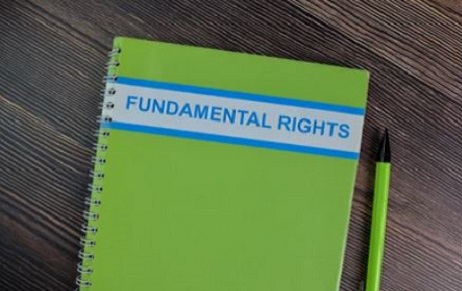Franklin D. Roosevelt (FRD) on different platforms, supported the Indian Freedom Struggle making the abovementioned…
Regulatory And Legislative Realm Of Generic Drugs In India And Abroad
The importance of Intellectual Property Rights in the 21st century cannot be more emphasised. The concept of asset fencing, to secure the Intellectual Property is echoing every corner of the world. Pharmaceutical industry is no exception to it, and hence there is a whispered use of IPR in this area, with wide range of controversial issues attached. The controversy further worsens when it comes to the trade-off between generic drugs and original drugs. The wide acceptance of generic drugs is primarily due to the fact that it costs less as compared to the original drugs. This is precisely why certain generic drugs have earned the status of being “live saving” drugs. Also, this is where the issue of the patentability of generic drugs come into being. In light of this backdrop, this article tries to bring forth the realm of generic drugs and patents in terms of regulatory and legislative frameworks and its scope in India and abroad.
[Picture Credit: gettyimage]

The scientific and technological sectors being ever evolving disciplines, new developments have been constantly sought for and brought in, but there still there exists stark differences between the health conditions of the population living in the developed countries and the ones living in the developing countries. It would thus be fair to state that their medical needs have largely been unmet. India, though being a generic drug industrial hub, fails to cater to the needs of the population altogether, and this is precisely why other nations increasingly deem India fit as a potential market for pharmaceutical industry. Consequently, in an attempt to boost medical advancement in the country, limelight has been shifted from process patents to the product patents which were strictly disallowed earlier. It further goes without saying that the disclosure of material information is an important factor upon which the grant of patent depends. This ensures that significant technical know-how is publicly available which ultimately makes room for innovation.
As a corollary to the above mentioned discussion, it is relevant to talk about Sections 3(D) and (E) of the Patents Act, 1970. These provisions restrict the scope of granting “incremental innovations” patent only in circumstances where there is significant therapeutic advantage over the existing molecules. Further, section 2(1) (J) states what does not come under the gamut of inventions within the meaning of the Patents Act. According to the said provision the mere discovery of a new form of a known substance which does not result in the enhancement of the known efficacy of that substance, or the mere use of a known process, machine or apparatus unless such known process results in a new product or employs at least one new reactant or the mere discovery of any new property or new use for a known substance, cannot come within the ambit of “inventions”. Effectively, Section 3 has been formulated in a manner so as to satisfy the three steps of patentability i.e. novelty, inventive step and industrial application. Moreover, prima facie, the section apparently lays down that unless the new property has such properties which are altogether different from an already existing property and has resulted in increased efficacy, a mere discovery of a new form of an already known substance cannot be patentable. Section 3(E) further excludes the mere discovery of a substance by admixture resulting only in the aggregation of the properties of the components, from the ambit of “inventions”.
In this backdrop, when we specifically talk about Generic Drugs in the field of Intellectual Property, it is only appropriate to take into consideration certain landmark judgements in that regard:
HOFFMANN-LA ROCHE LTD. & ANR. V. CIPLA LTD
Here, an application for patent of drug named “Tarceva”, which was derived from Erlotnib was filed by Roche and Pfizer. This drug was meant to be used primarily for the treatment of cancer. This drug got patented in India and was thereby recognised by the Indian authorities. In the meantime Cipla limited started manufacturing of same drug under the name “Erlocip”. Consequently, Roche filed a suit for the grant of injunction on the ground of IP infringement. Cipla argued that their drug was a lifesaving drug. Convinced by the said proposition, the Court here denied injunction considering the “irreparable injury” to public interest and the adverse effect of such an order on the lives of millions of other people not a party to the suit. However, in appeal the court held that, Cipla has infringed the Patent rights of Roche Ltd and also imposed a fine of Rs. 5 lakhs on Cipla. The Bench observed that the main purpose of Section 3(d) is basically to encourage an innovative approach in the pharmaceutical sector. The bench also laid down a threshold for determining as to what shall qualify as a “same” or a “known” or a “new” substance.
NOVARTIS V. UNION OF INDIA
Post 2005, certain amendments were introduced in the Patents Act of 1970 so as to comply with the provisions of the TRIPS Agreement (Trade Related Aspects of Intellectual Property Rights). Thereafter, the Pharmaceutical giants had a tough time adapting to these material changes. Novartis, one such giant raised the issue of what could be patented and to what extent the IP rights of an MNC could be protected under the new patent regime. Novartis was into the manufacturing of a drug against cancer, which would use “imatinibmesylate” (glivec). Consequently, Novartis filed for a patent for the said drug as per the Indian requirements. The Madras patent office rejected the application on the reasoning that the requirements under Section 3(d) were not fulfilled, in the sense that the modification lacked “inventiveness”. Thereafter, on an appeal by Novartis contending the constitutional validity of sec 3(d), the Apex Court upheld the validity and further observed that the requirement of ‘therapeutic efficacy’ must be interpreted in a strict sense. Section 3(d) has actually helped in the prevention of ‘ever-greening’, which would have resulted in huge plunge in the prices of essential drugs due to monopoly, which in turn would have made India’s healthcare unaffordable. Thus, the strict patent protection regime is all the more justified under the current circumstances.
Thus, we see that under the Indian regime, the Pharma Business is a standout owing to the fact that pharmaceutical research is exorbitant and unusual in nature here. Therefore, in this exceptionally aggressive market, it is necessary for organizations to shield their creations from any unapproved business use by procuring patent rights over the developed item/process.
When it comes to the United States of America, the 1984 Drug Price Competition and Patent Term Restoration Act (more commonly known as the Hatch-Waxman Act) provided for an approval mechanism for generic drug copies. The system was an abbreviated version, meaning that it chucked off the formality of pre-clinical and clinical trials for generic drugs. Thus, the intention here was to lessen the costs of generic medicines. As per the requirements of the Act, a generic drug must, firstly, be constituted of the same active ingredients; secondly, be identical in terms of dosage and strength prescriptions; thirdly, be bioequivalent (i.e., have similar rate of absorption); fourthly, match the standards of quality and purity and lastly, must follow FDA’s good manufacturing practice regulations.
The position in the European Union is way more arduous that that of the US. Each EU member has a separate authority and has to comply to separate statutory requirements in addition to the overall supervision of the European Medicines Agency (EMA). Recent trends increasingly suggest that the EU is taking serious measures to advance the growth EU manufacturers producing generic drugs.
Comprehensively, both US and EU frameworks provide for an abbreviated procedure in case of generics in the pharmaceutical sector per se.
Africa is highly dependent on pharmaceutical imports in order to meet its general wellbeing needs because of persisting diseases such as Malady. As Asian producers of nonexclusive prescriptions work under a more protectionist licensed innovative administration, their capacity to manipulate drugs at costs that are reasonable to poorer nations is ending up to be more encircled. Therefore, the World Health Organisation (WHO) increasingly suggests the utilization of political strains to accomplish differential evaluating and lawful adaptabilities accessible under the TRIPS Agreement.
Conclusion:
While the drug patenting is dynamic and ever changing, it becomes quite important to keep a constant check on it. Also, India being a signatory to the TRIPS Agreement and the Paris Convention of 1883, is expected to have a robust health infrastructure to fulfil the obligations that the WTO expects from its member countries. In doing so, an appropriate framework for reimbursing the associated parties which shall suffer due to such a grant of patent to generic drugs needs to be in place so as to create a win-win situation for all the stakeholders involved. It can be safely said that it all boils down to the sole principle that it is fairly important to uphold the protection to pharmaceutical industries by providing adequate rights through patenting, but at the same time, it is equally essential to ensure that primary and quality healthcare is accessible to and affordable by the developing countries.
Author: Mahak Agrawal – a student of Symbiosis Law School (Nagpur), in case of any queries please contact/write back to us via email chhavi@khuranaandkhurana.com or at Khurana & Khurana, Advocates and IP Attorney.



